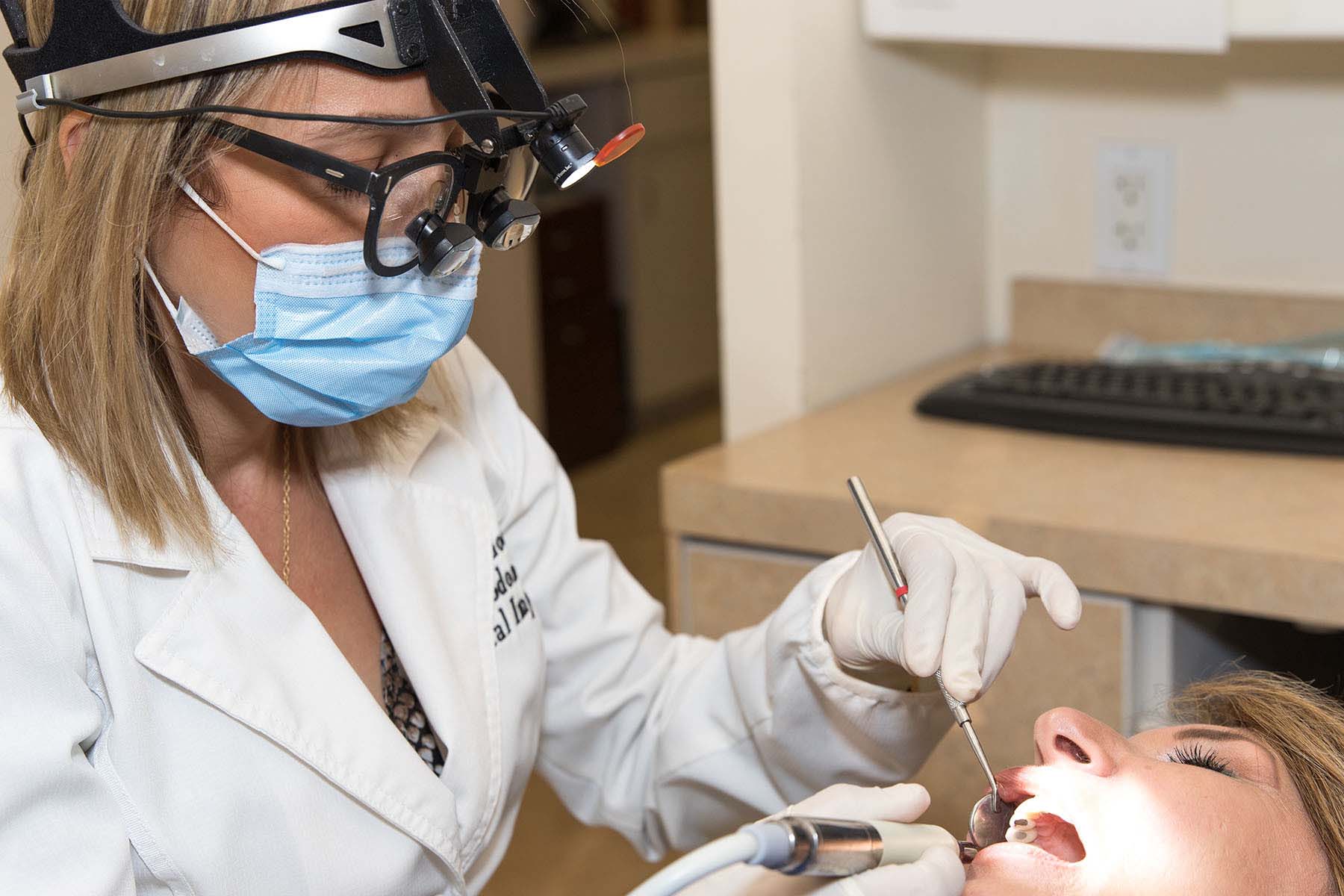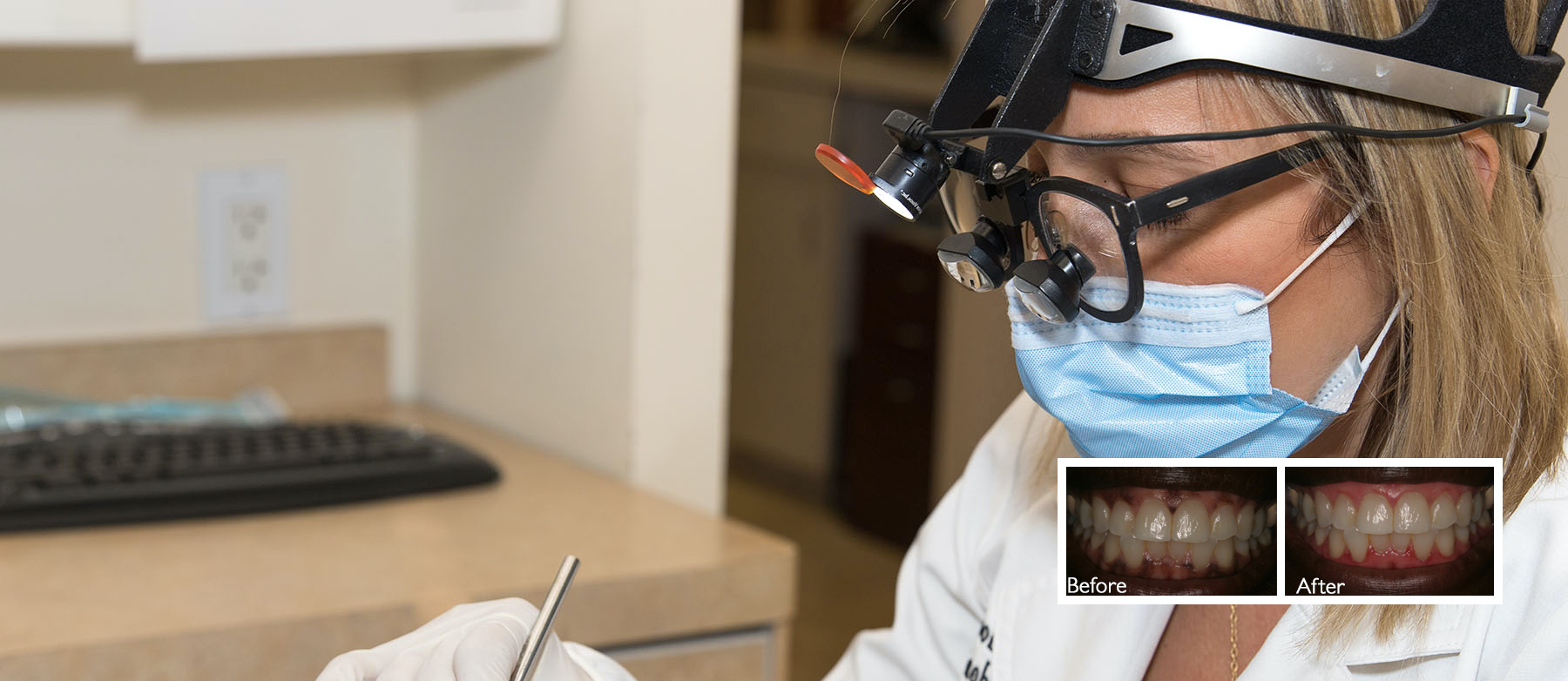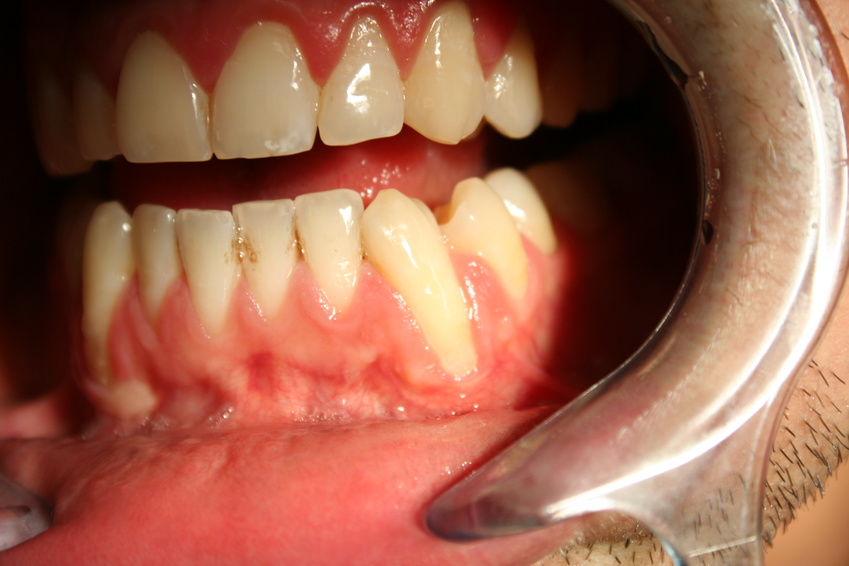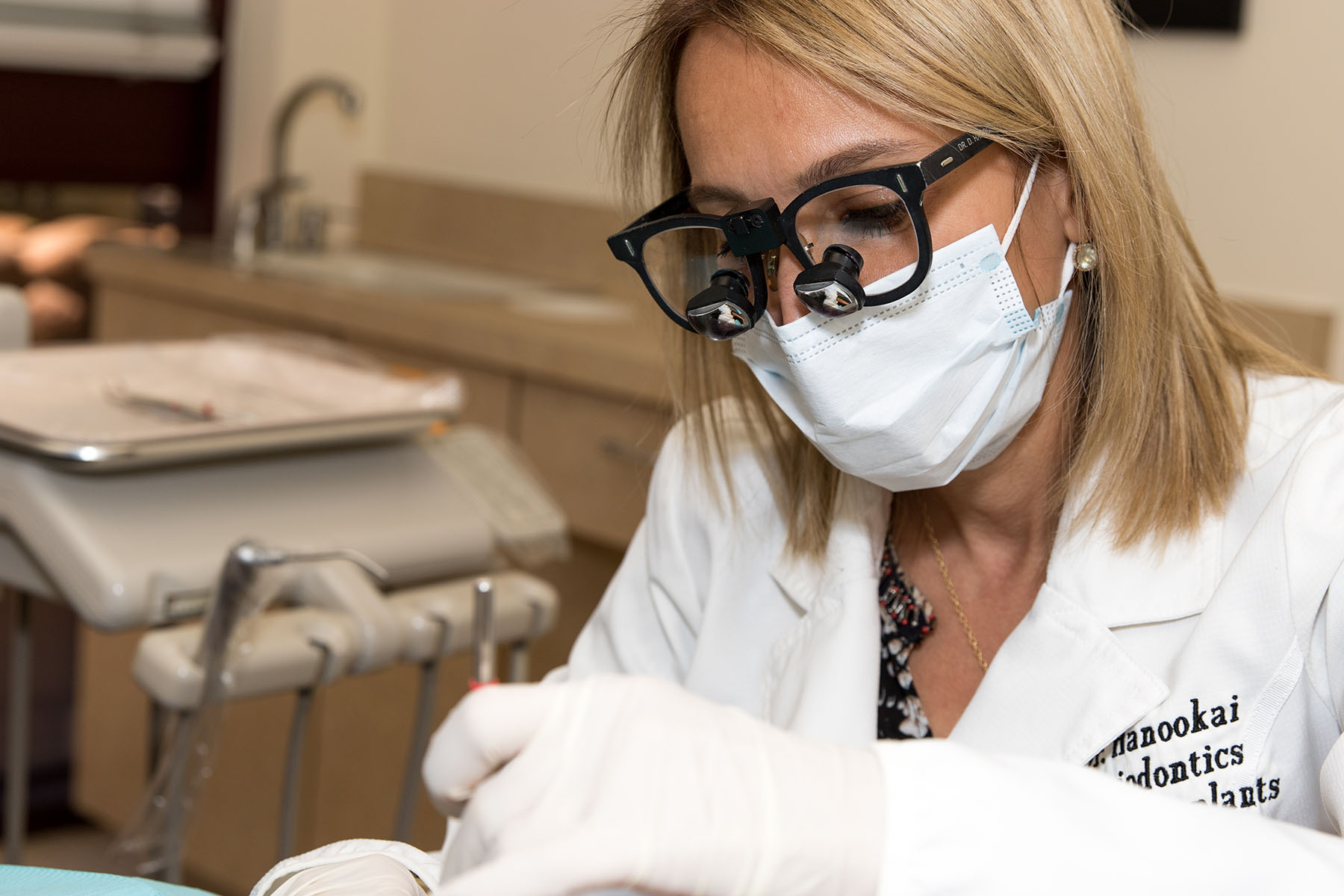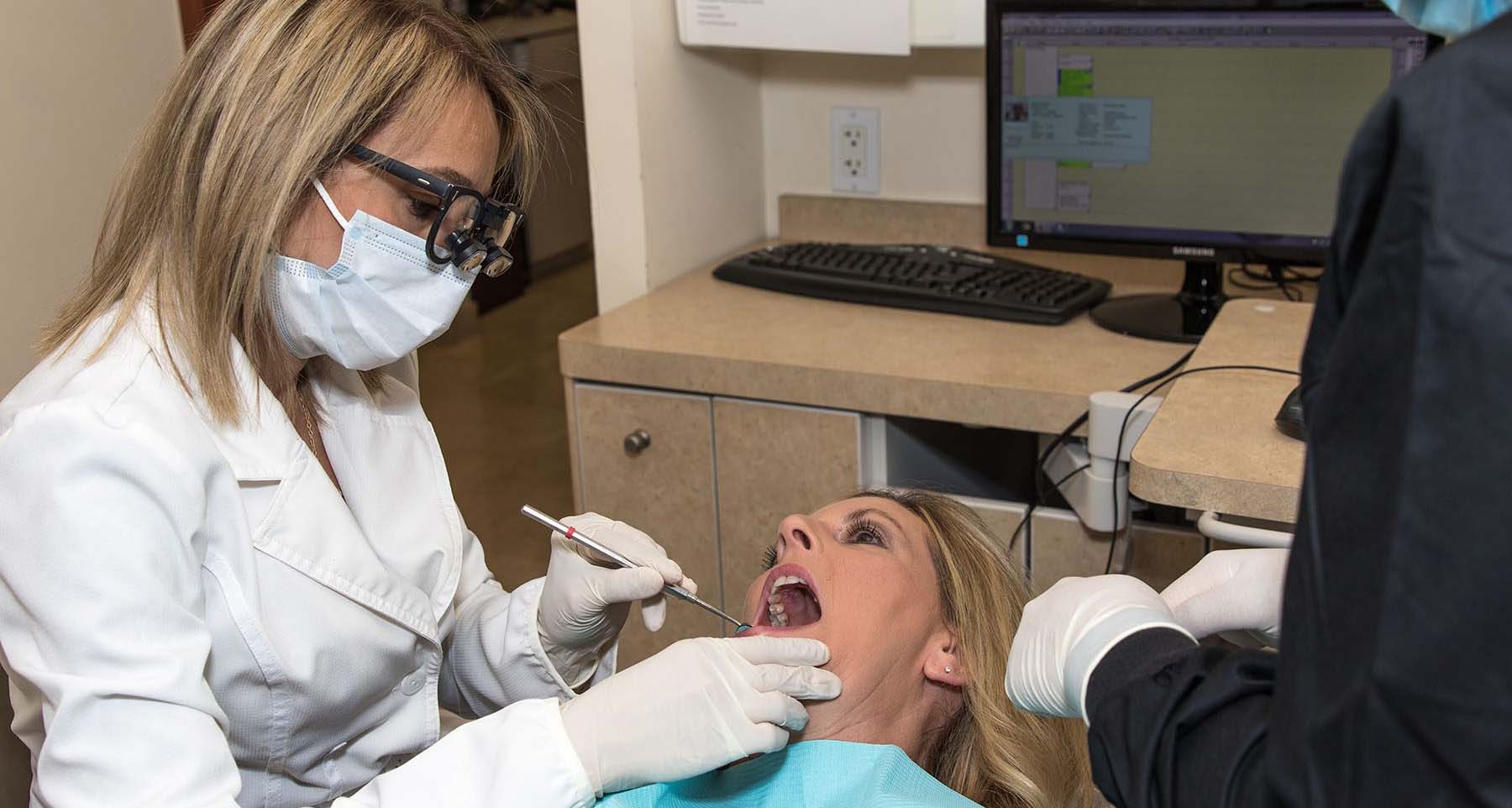Gum recession is something that many people will suffer from at some point in their lives. This has led to a significant number of people to wonder what the best treatment for gum recession is, as well as what the cost associated with gum disease treatment will be.
This is something that’s made somewhat more difficult by the fact that there are a variety of treatments available. While these can vary from state to state, there is a wealth of choice when it comes to gum disease treatment cost in Los Angeles, with gum recession surgery being one of the more common.
This doesn’t mean that surgery will be the best treatment for gum recession for a specific patient. Instead, there can be several aspects that will factor into this. This means that you’ll need to speak with a dentist to determine what the best treatment for gum recession in your particular case is.
There are several things that you can do to prevent the need for getting treatment. This is because gum recession doesn’t have to occur, although many of us may not know how to do so. As such, it’s worth taking a look at how you can avoid the condition from advancing, as well as developing in the first place.
What Causes Gum Recession?
There are a variety of things that can cause gum recession, which means that there are several factors that you should consider if you’re looking to prevent it. The first of these is aggressive tooth brushing, which may harm the gums and cause them to recede.
There are also a variety of oral infections that may cause the condition, which is the leading cause of gum recession. This means that you should take adequate care of your mouth and treat any of these as soon as they develop.
Insufficient dental care may also cause the issue, which makes proper hygiene even more vital. Grinding and clenching can also play a role in this, as they put a significant amount of pressure on your gums.
Lastly are hormonal changes and your DNA, with many people being predisposed to developing the condition. While these can often be unavoidable, it does mean that you should place a significant amount of time into preventing the disease from developing.
Symptoms Of Gum Recession
Aside from exposed teeth, there can be several symptoms of gum recession that you’ll need to be aware of. One of the most prominent of these is red, swollen gums that may start bleeding after you’ve brushed or flossed.
You’ll also begin to notice that your gums become visibly reduced over time. During this period, you may also see that your teeth will become looser. You may also develop bad breath, which will become progressively worse as the issue develops.
Should the gums recede for a certain amount of time, then you may start developing a certain amount of pain along your gum line. If you experience any of the above, especially in combination, then it’s recommended that you see a dentist as early as possible.
How To Prevent Gum Recession
The best treatment for gum recession is to avoid the condition entirely, although many of us may not be aware of how to do so. There are a few ways that you can do so, with the most obvious being proper oral care.
You can do so in a few ways. Should you smoke, then it’s recommended that you quit. Alongside the avoidance of gum recession, this has a variety of other health benefits, which makes it increasingly more attractive.
Alongside this, you should ensure that you maintain a healthy and balanced diet, which also has several health benefits. You should also monitor any changes that may occur in your mouth, some of which may lead to gum recession.
There can be a variety of other causes of the condition, as we mentioned above. Many of these may not be entirely preventable. This means that you should speak to a dentist or oral surgeon about these issues before they lead to gum recession.
Similar to many other things, the best defense can be a good offense, which means that the best treatment for gum recession can often be to look after your mouth health.
How To Treat Receding Gums
Many of us will wonder what the best treatment for gum recession might be. This is because there are a variety of treatments that have proven to be effective. If you have a mild case of the condition, then it might be simple to do so.
This is because your dentist may be able to treat it with a deep clean, as the issue may be caused by plaque and tartar buildup. Should this not be effective, then surgery may be the only option available.
The treatment options available to you may depend significantly on how advanced the gum recession is. This means that the best treatment for gum recession can often be affected by which stage the disease is at.
As a result, it’s highly recommended that you visit your dentist as early as possible. This means that you’ll be able to avoid many of the issues associated with the condition by quickly identifying that there is a problem and then seeking the appropriate help.
Cost of Gum Recession Treatment
The cost of gum recession treatment will depend on which procedure you receive. This is primarily driven by how quickly you get the condition seen to, as the more advanced it is, the more you’ll likely have to pay.
As we mentioned above, in some cases you may simply need a deep cleaning, which may cost several hundred dollars. In more advanced cases, however, you may need dental surgery to have the issue fixed.
While this can vary depending on which dentist you see, the cost of gum disease treatment can cost up to $2,000, or even more. This means that the earlier you have the condition treated, the more money you’ll save.
In many cases, you may need a gum tissue graft, which can cost between $1,600 and $2,000, if not more.
What Is Gum Tissue Graft?
A gum tissue graft is arguably the best treatment for gum recession currently available and is a term used for several similar therapies.
The first of these is what’s known as a connective tissue graft, which is where a periodontist or dentist will take tissue from the roof of your mouth and place it over an exposed root. After this, they’ll then secure the tissue and place stitches on the roof of your mouth.
Next is what’s called a free gingival graft, which is the best treatment for gum recession for patients who need to enlarge their gums as a result of the condition. This is somewhat similar to the surgery we mentioned above in that it involves many of the same steps.
Lastly is what’s known as a pedicle graft, which is the best treatment for gum recession for people who have excess gum growing near an exposed tooth. During this procedure, the periodontist will graft tissue from the gum surrounding the exposed tooth.
During this time, they will only partially cut away the tissue and leave one edge attached to your gum. Following this, the periodontist will stretch the skin over your exposed gum and secure it with stitches.
Which of this is the best treatment for gum recession will depend on a patient’s individual needs and the extent of their gum recession. This means that you will need to speak to an oral surgeon or dentist to determine which procedure to go with.
Much of this is driven by how far advanced the condition is. As a result, your dentist will have to examine you and should then determine which is the best treatment for gum recession in a particular case.
Cost of Gum Tissue Graft
The cost of a graft can vary significantly depending on which one you’ll need to undergo. As a rule of thumb, the best treatment for gum recession may cost you more than you expect, with more advanced conditions requiring most expensive procedures.
In general, a typical skin graft can cost between $600 and $1,200 for a single operation. This means that you may need to spend quite a significant amount of money if you have a variety of teeth that need to be treated.
This cost can change depending on where the skin for the treatment is taken from. Should the replacement skin be taken from a cadaver, for example, then you should expect to pay much more money than if it was taken from your mouth.
When it comes to receiving the best treatment for gum recession, however, this can be worth the money. This is because it will ensure that the gum recession is appropriately treated and that it shouldn’t advance any further.
However, this also means that you’ll need to pay a particular amount of attention to prevent any further issues from developing.
How Long Will It Take For The Gum Graft To Heal?
Many people may want to know how long it will take to heal after gum recession surgery. While there are a variety of things that can affect this, the best treatment for gum recession should typically take between one and two weeks to heal.
There are a few things that you’ll need to avoid to speed this process up. One of the most notable of these is the avoidance of smoking, which is something that your dentist will recommend.
Alongside this, you should consider using specific mouthwash to prevent the buildup of plaque while you’re healing. Your dentist should be able to recommend various brands for this purpose.
It’s also recommended that you take antibiotics to reduce the risk of infection. This is something that your oral surgeon should recommend, and they may prescribe you one of these either before or after your procedure.
For the best treatment of gum recession and healing, it’s also recommended that you avoid strenuous exercise. This is because it will increase your blood pressure, which may have adverse effects on your stitches and the healing process.
You should also avoid eating foods that may tear your stitches during the healing process, as this will prolong it.
Other Treatment Options For Gum Recession
Outside of a gum graft, there are a variety of treatment options available to you, although many of these will depend on your particular case. This means that finding the best treatment for gum recession is something that you’ll need to speak with your dentist or oral surgeon about.
One of the most notable of these is what’s called open flap scaling and root planing. During this procedure, your periodontist or dentist will peel back the affected gum and remove the bacteria that are causing the gum recession. Once this has been done, they’ll secure the gum tissue back in place.
While this may be one of the easier procedures to undergo, it may only be the best treatment for gum recession for cases where the condition isn’t particularly advanced.
For cases where the issue is severe, then the best treatment for gum recession may be what’s known as regeneration. This is a procedure that’s mainly recommended if a patient has lost a certain amount of bone and tissue as a result of the condition, and is somewhat similar to a gum graft, although it has some key differences.
During the process, a tissue-stimulating protein or membrane will be placed and secured in the affected area. Once this has been done, it should encourage your tissue and bone to begin regenerating.
There are a variety of options when it comes to getting gum recession treatment in Los Angeles. To make sure that you receive the best treatment for gum recession, you should put a significant amount of time into researching which dentist you should visit.
Once you’ve done so, you should speak with them about your particular issue, and they’ll be able to recommend the best treatment for gum recession for your case. While this can be a time-consuming process, it can be well worth the effort, as it will ensure that the issue is taken care of for good.
Much of this will be driven by the fact that the best treatment for gum recession can be dependent on how advanced the condition is. This means that many of the procedures for the disease will be somewhat tailored to you.
In many cases, gum recession surgery may be unavoidable, although this may be avoided by taking the preventative measures that we mentioned above. This will save you a significant amount of time and money. It also means that you’ll be able to avoid many of the symptoms of gum recession, none of which can be pleasant.
Click here for our complete guide to cost of gum disease treatment.

